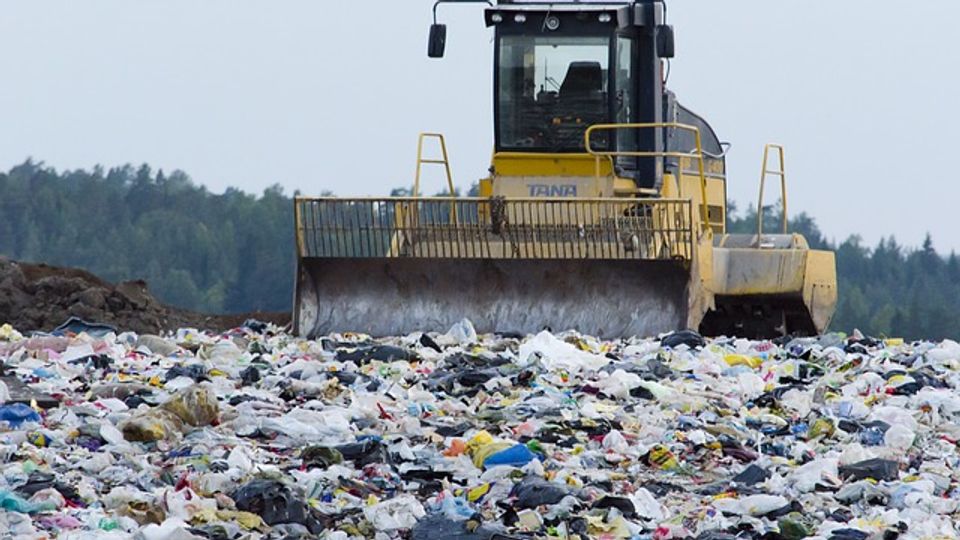Whether we like it or not plastics despite their problems are so entrenched in our lives that given the technological limitations persisting presently to neutralize them we are forced to find ways to coexist, and where possible to endure a cohabitation relationship. Waste management efforts loosely observe the three basic rules of reduce, reuse and recycle the products we use, and plastics are no exception.
Plastics are being reduced in terms of usage, and recycled where appropriate but its reuse has taken new dimensions away from conventional wisdom. It is the technologies of turning plastics by alterations of their molecular structures that provoke a vibrant debate.
Questions are being raised about the ethics, health and sustainability of such an innovative endeavour. This discourse interrogates all these issues in a manner that broadens our understanding of the pros and cons of such a breathtaking undertaking.
The applications of converting plastics into protein can potentially turn out to be a game changer. The technology to convert plastics into edible proteins has been around for some time but was bogged down by several obstacles in particularly the cost of energy. The conversion process uses technology called pyrolysis and fermentation, combined with a proprietary bacteria population.
Waste plastic is heated to high temperatures in the absence of oxygen to break it down into its components, or monomers. That’s the pyrolysis step. Then, the broken-down plastic (which has become an oil-like substance) is fed to a specialized population of bacteria that will ingest it and grow. That’s the fermentation step. The resulting bacterial cells are composed of around 55% protein, and this protein-rich biomass can be used as food.
Read Related: Plastic Waste is Up But Technologies to Recycle it Still Struggling
There are many types of plastic systems, unfortunately, and the processes needed for such a gargantuan effort may vary from one system of protein to another. There will be no silver bullet or a magical wand that will be available to treat all kinds of plastics and convert them into edible proteins.
The system currently focuses on common plastics like polyethylenes, polypropylenes, and PET (commonly used in soft drink bottles), but the researchers also plan to develop chemical processes that can break down other types of plastics.
While pyrolysis does require energy to run, the end goal is to create a technique that is low energy and even potentially energy-generating, and the team is exploring options like solar power. “Sustainability is really at the centre of what we’re trying to do here,” says microbiologist Stephen Techtmann of Michigan Technological University, “We’re trying to create a process that deals with plastic pollution and can potentially produce a valuable resource such as food.”
The process is several years away from widespread implementation, but it is hoped in the next couple of years it can be executed on a smaller scale—as a portable system used to meet immediate food needs in disaster relief and other crisis scenarios. In the long run, researchers seek to scale the process to address pressing issues like food insecurity. Techtmann notes, “I don’t think this is going to be the silver bullet that solves everything, but it’s another opportunity because it’s going to take a lot of creative thinking to address these big problems.”
Can Plastics Turned Into Edible Proteins End Global Food Insecurity?
Global food insecurity seems to be here to stay because it employs a lot of people who pretend to do something about it while in real terms do very little meaningful. If global hunger can end today, lots of high-paying jobs will vanish that in itself offers a major reason to treat the symptoms of hunger rather than its causes!
While bad weather, soil infertility, land maldistribution, poor storage, inadequate processing and global conflicts do contribute to the problem of global insecurity a top, heavy top-down system of governance has alienated the very hungry targeted people from decision-making. This topsy-turvy circumstance probably more than anything else exacerbates the global hunger we now see overwhelming poor populations all over the world.
New processes of turning waste into edible foods once the side effects have been exhaustively studied and mitigated then the remaining hurdle becomes how to empower hungry families with the ability to convert waste into edible proteins. Resolution of such challenges will go a long way to pimp hunger everywhere.
Just imagine the availability of economical mechanisms to decompose used plastics into edible proteins that can fill the bellies of hungry populations. Plastics are ubiquitous and collecting them will clean up the environment, and introduce powerful incentives that are lacking today for the monetization of waste.
Also, read Turning Plastic Waste into Green Jobs: A Path to Prosperity and Sustainability
Once waste has market value then we may not need costly transportation means to gather the dirt for centralised decomposition that takes a huge chunk of land, and seeps through the soil’s toxic materials that potentially can pollute water sources piling health costs to apprehend them.
Availability of renewable energy from sources such as solar, wind and current waves to break up the plastic compounds will lower the barriers of entry, and bring more people into the practice. However, we must acknowledge not all kinds of plastics can be broken down into edible proteins. Others might not be available for that. But we may, over time, find ways to convert the tough plastics into other human uses, not necessarily to fill our bellies.
Looks like science one day will be able to reduce plastics into harmless forms that can present us with attractive and profitable ways to reuse them in a manner that will help support growing populations globally that seem booming.

